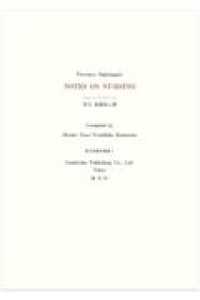- ホーム
- > 洋書
- > 英文書
- > Computer / General
Full Description
A Comprehensive Process for Defining Software Architectures That WorkA good software architecture is the foundation of any successful software system. Effective architecting requires a clear understanding of organizational roles, artifacts, activities performed, and the optimal sequence for performing those activities.With The Process of Software Architecting, Peter Eeles and Peter Cripps provide guidance on these challenges by covering all aspects of architecting a software system, introducing best-practice techniques that apply in every environment, whether based on Java EE, Microsoft .NET, or other technologies. Eeles and Cripps first illuminate concepts related to software architecture, including architecture documentation and reusable assets. Next, they present an accessible, task-focused guided tour through a typical project, focusing on the architect's role, with common issues illuminated and addressed throughout. Finally, they conclude with a set of best practices that can be applied to today's most complex systems.You will come away from this book understandingThe role of the architect in a typical software development project How to document a software architecture to satisfy the needs of different stakeholders The applicability of reusable assets in the process of architecting The role of the architect with respect to requirements definition The derivation of an architecture based on a set of requirements The relevance of architecting in creating complex systemsThe Process of Software Architecting will be an indispensable resource for every working and aspiring software architect-and for every project manager and other software professional who needs to understand how architecture influences their work.
Contents
Foreword xviiPreface xixAcknowledgments xxiiiAbout the Authors xxvChapter 1: Introduction 1Applying the Process 2The Process in Brief 2Scope 8Summary 8Chapter 2: Architecture, Architect, Architecting 9Architecture 9Architect 21The Benefits of Architecting 35Summary 40Chapter 3: Method Fundamentals 43Key Concepts 43Method Content 46Process 50Summary 59Chapter 4: Documenting a Software Architecture 61The End Game 62Key Concepts 64Viewpoints and Views 65Models 72Characteristics of an Architecture Description Framework 75An Architecture Description Framework 81The Software Architecture Document 87Summary 88Chapter 5: Reusable Architecture Assets 89Sources of Architecture 89An Architecture Asset Metamodel 90Asset Types 94Attributes of an Architecture Asset 103Other Reuse Considerations 106Summary 106Chapter 6: Introduction to the Case Study 107Applying the Process 107Scope of the Case Study 110Application Overview 115The YourTour Vision 118Summary 123Chapter 7: Defining the Requirements 125Relating Requirements to Architecture 128Functional and Non-Functional Requirements 130Techniques for Documenting Requirements 131Applying the Process 132Understanding the Task Descriptions 133Define Requirements: Activity Overview 134Task: Collect Stakeholder Requests 136Task: Capture Common Vocabulary 141Task: Define System Context 143Task: Outline Functional Requirements 149Task: Outline Non-Functional Requirements 156Task: Prioritize Requirements 160Task: Detail Functional Requirements 164Task: Detail Non-Functional Requirements 171Task: Update Software Architecture Document 174Task: Review Requirements with Stakeholders 175Summary 176Chapter 8: Creating the Logical Architecture 179Moving from Requirements to Solution 182How Much Logical Architecture? 185Applying the Process 188Create Logical Architecture: Activity Overview 188Task: Survey Architecture Assets 192Task: Define Architecture Overview 194Task: Document Architecture Decisions 200Task: Outline Functional Elements 204Task: Outline Deployment Elements 222Task: Verify Architecture 228Task: Build Architecture Proof-of-Concept 232Task: Detail Functional Elements 234Task: Detail Deployment Elements 245Task: Validate Architecture 251Task: Update Software Architecture Document 256Task: Review Architecture with Stakeholders 258Summary 260Chapter 9: Creating the Physical Architecture 261Moving from Logical to Physical Architecture 263Applying the Process 265Creating the Physical Architecture: Activity Overview 266Task: Survey Architecture Assets 269Task: Define Architecture Overview 270Task: Document Architecture Decisions 273Task: Outline Functional Elements 274Task: Outline Deployment Elements 289Task: Verify Architecture 292Task: Build Architecture Proof-of-Concept 293Task: Detail Functional Elements 294Task: Detail Deployment Elements 296Task: Validate Architecture 300Task: Update Software Architecture Document 301Task: Review Architecture with Stakeholders 301Summary 302Chapter 10: Beyond the Basics 303The Architect and the Project Team 303The Architect and External Influences 313Architecting Complex Systems 318Summary 330In Conclusion: A Note from the Authors 331Appendix A: Software Architecture Metamodel 333Definition of Metamodel Terms 335Appendix B: Viewpoint Catalog 339Stakeholder Summary 340Basic Viewpoints 341Cross-Cutting Viewpoints 344View Correspondence 347Appendix C: Method Summary 351Roles 351Work Products 354Activities 356Tasks 356Phases 362Appendix D: Architectural Requirement Checklist 365Functional Requirements 366Usability Requirements 366Reliability Requirements 367Performance Requirements 367Supportability Requirements 368Constraints 368Glossary 373References 379Index 385







